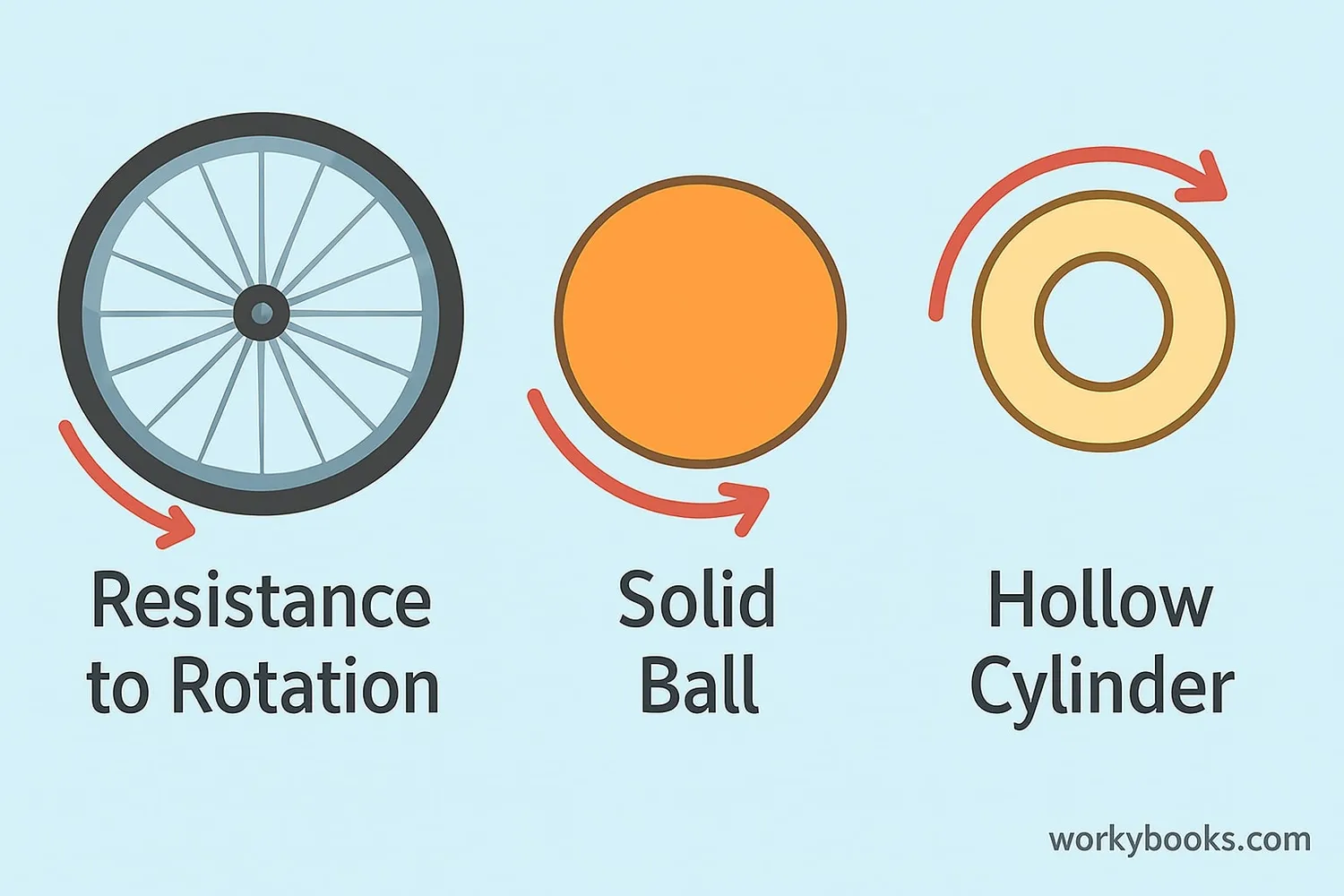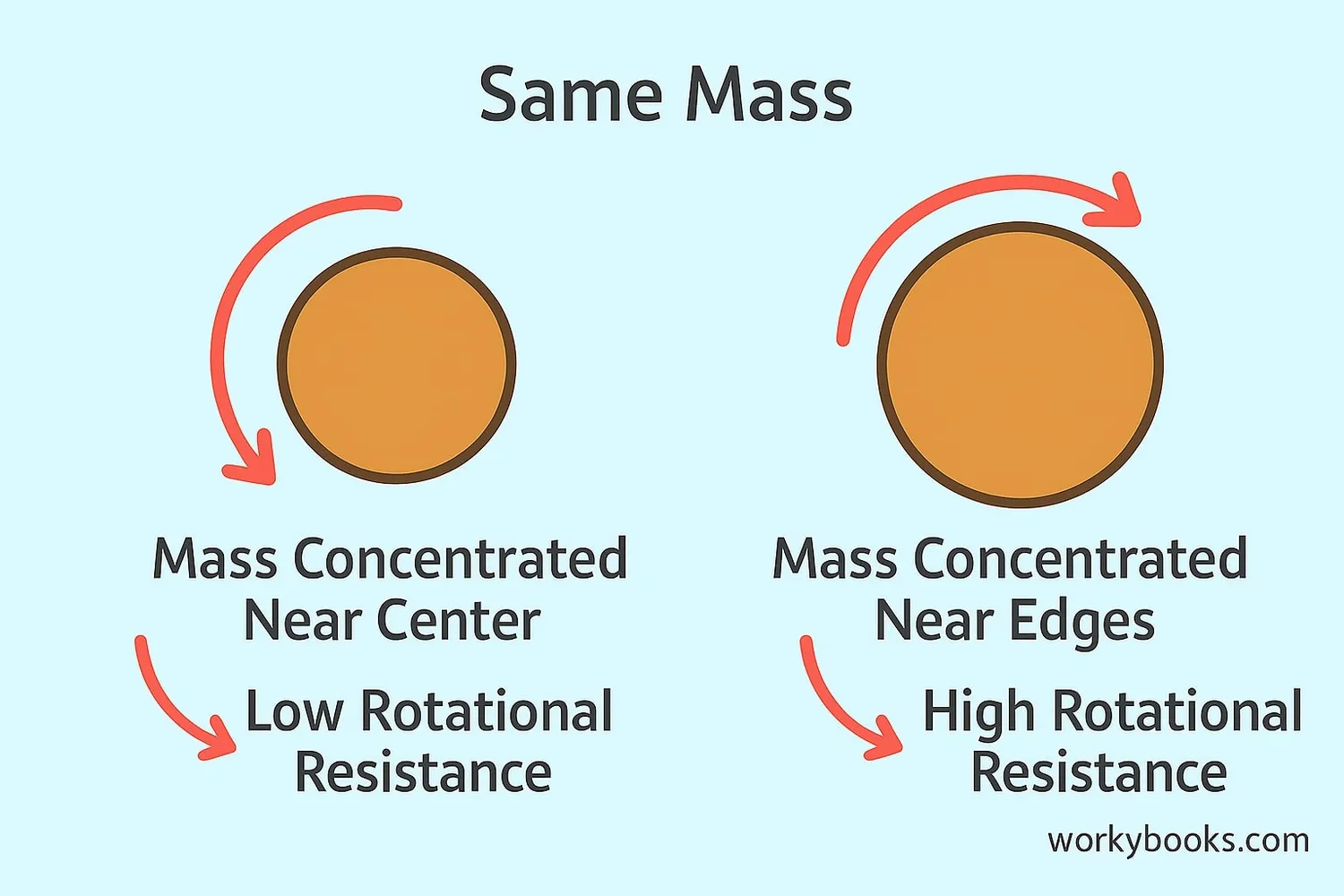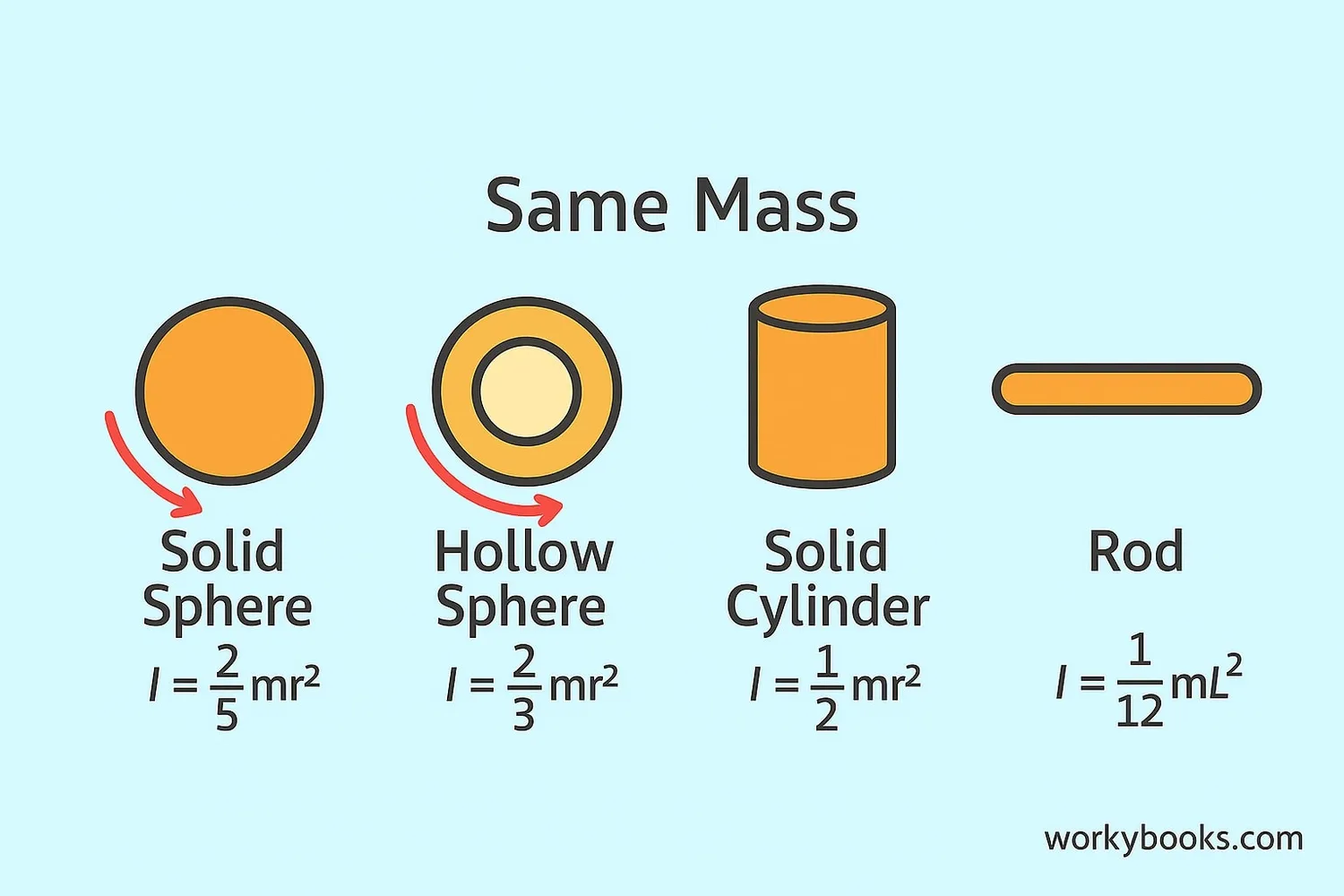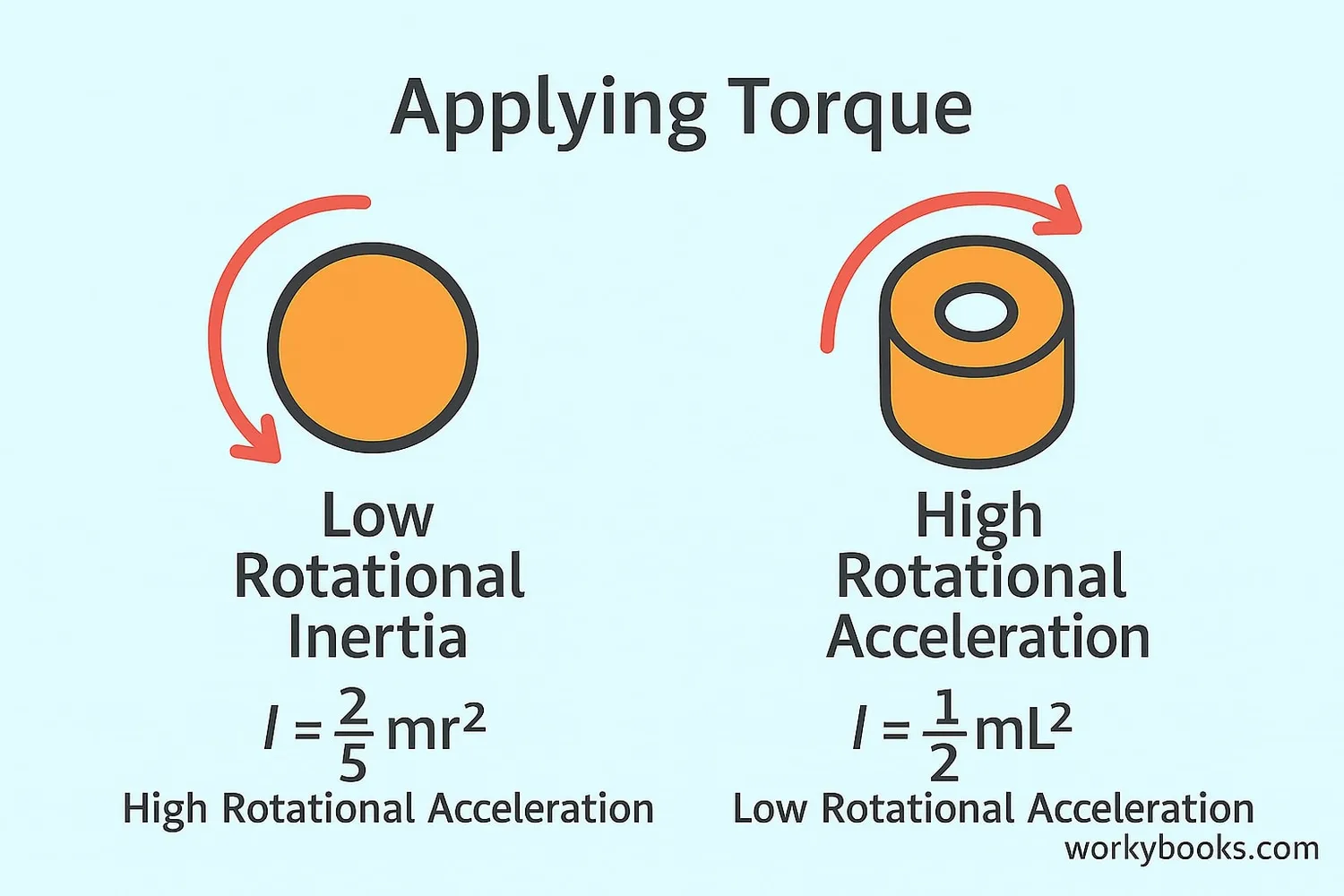Rotational Inertia - Definition, Examples, Quiz, FAQ, Trivia
Learn how objects resist changes to their rotation
What is Rotational Inertia?

Rotational inertia, also called moment of inertia, is a property of objects that measures how difficult it is to change their rotation. Just like regular inertia makes it hard to change an object's motion in a straight line, rotational inertia makes it hard to change how an object spins.
Think of it this way: it's much easier to start or stop a small toy top spinning than a heavy bicycle wheel. The bicycle wheel has more rotational inertia, so it resists changes to its spinning motion more than the small top does.
Key Point
Rotational inertia depends on both the mass of an object and how that mass is distributed relative to the axis of rotation.
How Rotational Inertia Works

Rotational inertia works based on two important factors:
Total Mass
Objects with more mass have greater rotational inertia
Mass Distribution
Mass farther from the axis creates more rotational inertia
This is why figure skaters can control their spin speed by changing their body position. When they pull their arms in, they bring mass closer to their axis of rotation, decreasing rotational inertia and spinning faster. When they extend their arms, they increase rotational inertia and slow down.
Real World Example
Bicycle wheels are designed with most mass at the rim to create stable rotational inertia that keeps the wheel spinning smoothly.
Rotational Inertia Formulas & Examples

Scientists use mathematical formulas to calculate rotational inertia for different shapes. The basic idea is that each bit of mass contributes to rotational inertia based on how far it is from the axis of rotation.
Where I is rotational inertia, m is mass, and r is distance from axis
Here are rotational inertia formulas for common shapes:
Solid Sphere
I = ²⁄₅MR²
Mass distributed throughout
Hollow Sphere
I = ²⁄₃MR²
Mass concentrated at surface
Solid Cylinder
I = ½MR²
Rotating about central axis
Notice that for the same mass and radius, a hollow sphere has more rotational inertia than a solid sphere because more mass is located farther from the center.
Torque and Rotational Inertia

Torque is the rotational equivalent of force. While force causes linear acceleration, torque causes rotational acceleration. The relationship between torque and rotational acceleration depends on rotational inertia.
Where τ is torque, I is rotational inertia, and α is rotational acceleration
This formula shows that for the same amount of torque:
High Rotational Inertia
Small rotational acceleration (hard to change rotation)
Low Rotational Inertia
Large rotational acceleration (easy to change rotation)
This is why it's easier to spin a pencil between your fingers than a baseball bat. The bat has more rotational inertia, so it requires more torque to achieve the same rotational acceleration.
Rotational Inertia Quiz
Test your rotational inertia knowledge with this quiz! Answer all 5 questions to see how much you've learned.
Frequently Asked Questions
Here are answers to some common questions about rotational inertia:
Interesting Rotational Inertia Facts
Discover some amazing facts about rotational inertia!
Space Applications
Satellites use reaction wheels with high rotational inertia to control their orientation in space without using fuel. By changing the speed of these spinning wheels, satellites can rotate slowly in the opposite direction.
Sports Science
In sports like diving and gymnastics, athletes manipulate their rotational inertia to control spins. Tucking reduces rotational inertia for faster spins, while extending increases it for slower rotations.
Animal Kingdom
Cats use rotational inertia to always land on their feet. By twisting different parts of their body while keeping total rotational inertia constant, they can reorient themselves during a fall.
Engineering Marvels
Flywheels are mechanical batteries that store energy using rotational inertia. Some can spin at over 50,000 RPM and store enough energy to power buildings during short outages.


